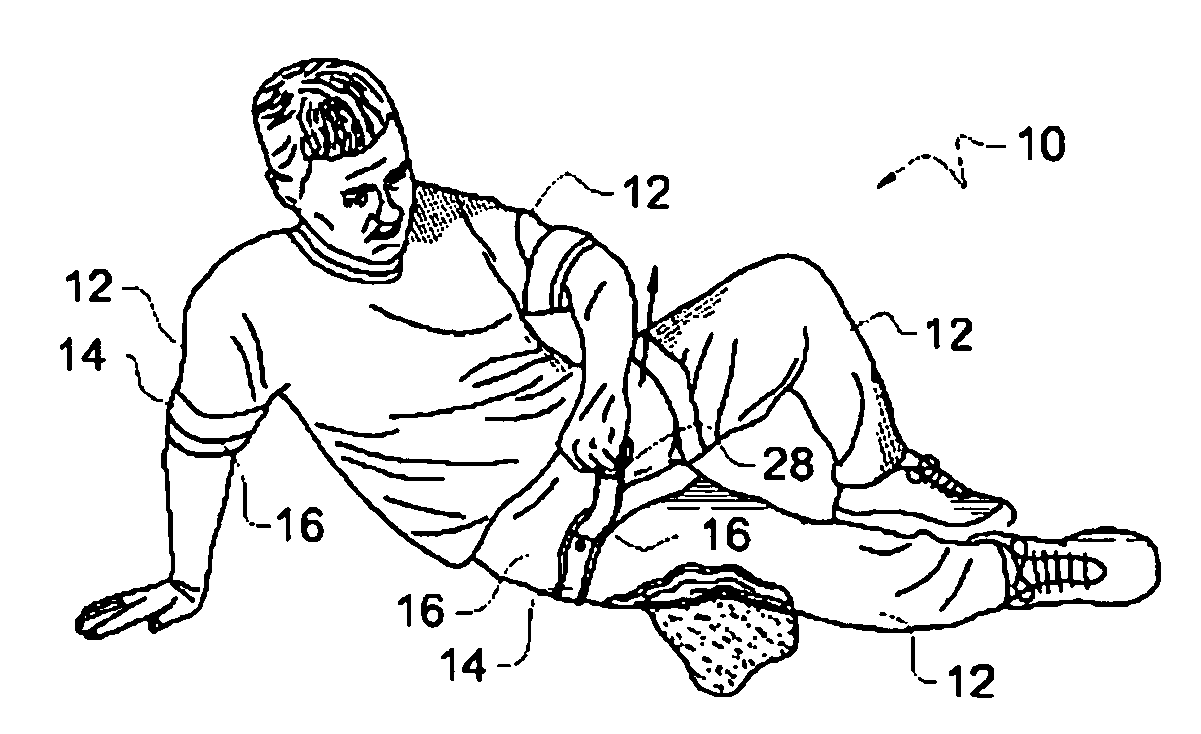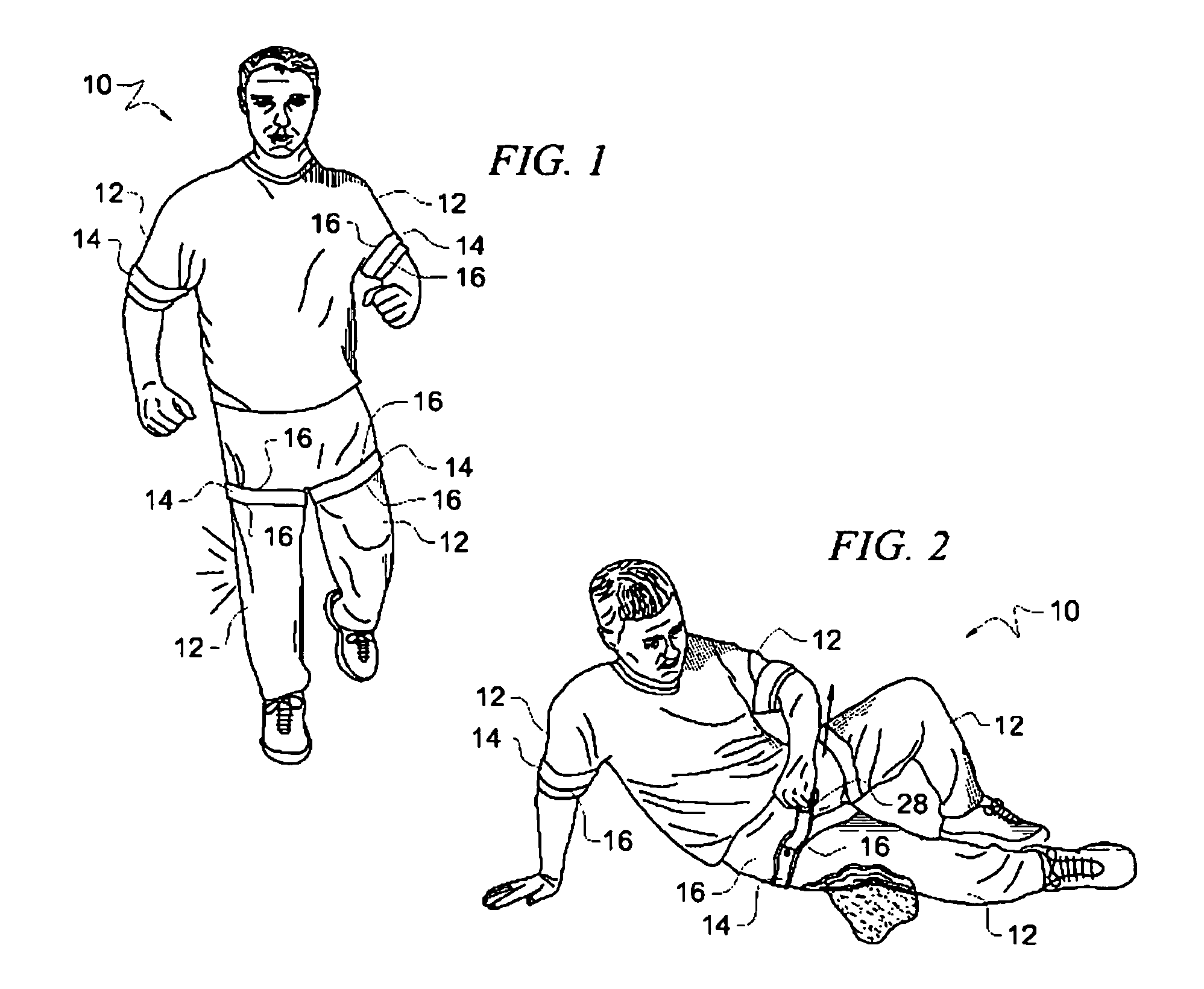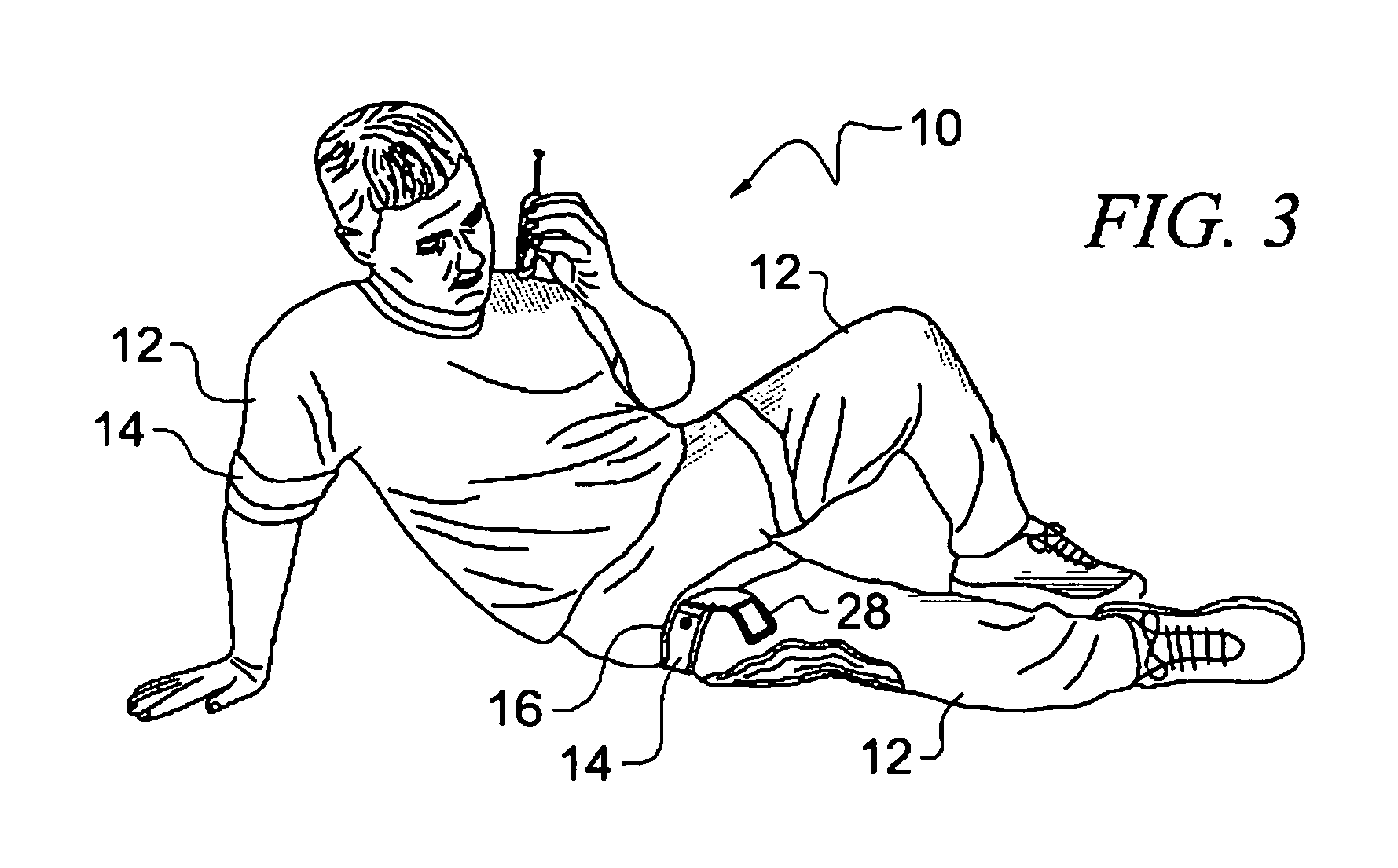Military clothing having built-in tourniquets
- Summary
- Abstract
- Description
- Claims
- Application Information
AI Technical Summary
Benefits of technology
Problems solved by technology
Method used
Image
Examples
Embodiment Construction
[0033]Referring now to FIGS. 1-3, it will there be seen that an illustrative embodiment of the invention is denoted as a whole by the reference numeral 10. Garment 10 includes two arm-receiving sleeves and two leg-receiving pant legs, collectively denoted 12. Each of these four limb-receiving sleeves or pant legs 12 is provided with the same tourniquet structure.
[0034]A person receiving a leg wound in FIG. 1 is depicted tightening the appropriate tourniquet in FIG. 2 and summoning medical assistance in FIG. 3. Significantly, the procedure depicted in FIG. 2 requires only a second or two.
[0035]As best understood in connection with FIGS. 4-6, a tourniquet housing 14 may be made by sewing or otherwise permanently affixing a flexible strip of cloth, leather, or other suitable material in overlying relation to an underlying sleeve or pant leg 12 in transverse relation to a longitudinal axis of symmetry of said sleeve or pant leg. Strip 14 is affixed at its peripheral edges 16 only so tha...
PUM
 Login to View More
Login to View More Abstract
Description
Claims
Application Information
 Login to View More
Login to View More - R&D
- Intellectual Property
- Life Sciences
- Materials
- Tech Scout
- Unparalleled Data Quality
- Higher Quality Content
- 60% Fewer Hallucinations
Browse by: Latest US Patents, China's latest patents, Technical Efficacy Thesaurus, Application Domain, Technology Topic, Popular Technical Reports.
© 2025 PatSnap. All rights reserved.Legal|Privacy policy|Modern Slavery Act Transparency Statement|Sitemap|About US| Contact US: help@patsnap.com



